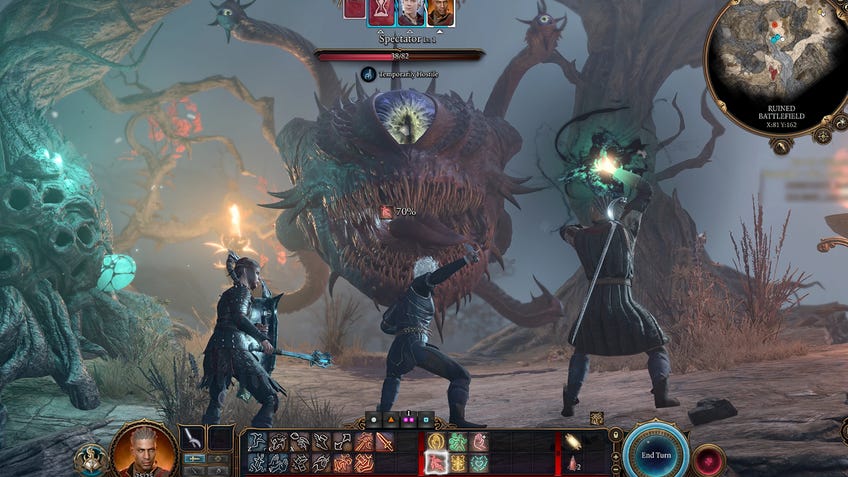Baldur’s Gate 3 tips from a seasoned Dungeons & Dragons player
These are invaluable to your quest in the Forgotten Realms.
Faerûn, the setting for Dungeons & Dragons video game Baldur’s Gate 3, is a one hell of a dangerous place. From gnolls to duergar to minotaur, many fearsome creatures await your party throughout the game, not to mention the various traps, hazardous plant life and deadly enchantments you’re sure to encounter.
If you’re currently playing through Baldur’s Gate 3, then it’s worth seeking help from those who have been adventuring in the Forgotten Realms way before the D&D video game was but a glint in Larian Studios’ eyes: Dungeons & Dragons players. Though a good chunk of BG3’s player base are undoubtedly already fans of the tabletop roleplaying game, the video game has also likely lured in plenty of people who don’t play D&D on a regular basis.
With Baldur’s Gate 3 being set in the same world as Dungeons & Dragons and using a very similar gameplay system – albeit in digital form – it makes sense that D&D players will have an advantage going into the video game. Besides knowing how each class works, knowing the difference between cantrips and first-level spells and other aspects of BG3, including its various bits of lore, Dungeons & Dragons players will know some useful tricks to make things easier.
Here are some tips from a seasoned Dungeons & Dragons player that you can implement into your playthrough of Baldur’s Gate 3.
1. Use stealth as much as possible
True soul, I’m trying to sneak around
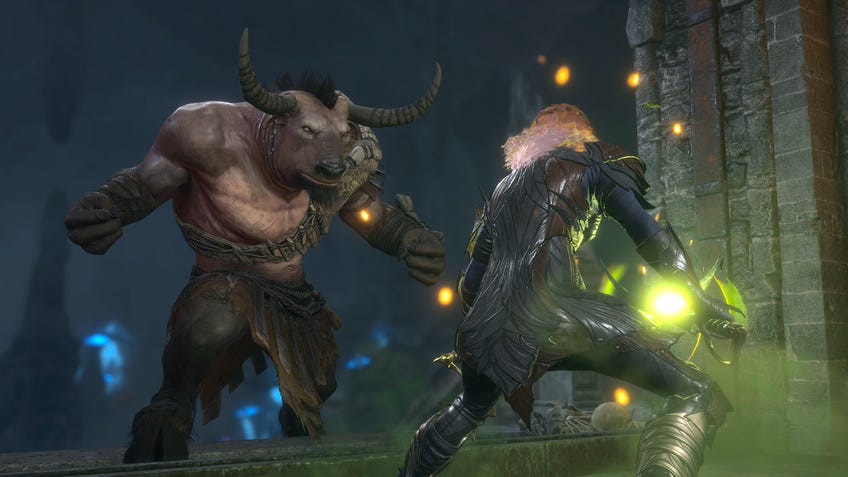
While barreling into combat might seem tempting, sometimes, a subtler approach can bear better fruit, especially if the enemies are numerous and/or particularly strong.
Though a rogue character like Astarion isn’t essential to sneaking, it certainly helps to have at least one character in your party with a high dexterity score: that’s the stat that will be rolled whenever you attempt to sneak past an enemy. Players can have their entire party enter sneak mode by pressing the ‘sneak mode’ toggle button on the lefthand side of the screen whenever they’re playing in real time.
Having your entire party attempt to sneak past enemies can be risky, unless you have a spell like Shadowheart’s Pass Without a Trace. Just as an individual player could tell the dungeon master they’re venturing off alone in a game of D&D, you can separate characters from the collective party in BG3 by selecting the ‘split party’ toggle button above the sneak button. Doing this will enable you to move a single character, such as Astarion or your own makeshift high-dexterity character. Whenever you enter sneak mode, the game will highlight the enemies’ field of vision in red. If your character passes through this, they’ll have to make a dexterity saving throw to not get spotted.
Sneaking off alone will enable you to scout ahead, check for potential ambushes and perform actions that would otherwise get you in trouble. Additionally, sneaking with a rogue character will allow you to perform a sneak attack on an enemy, giving you a good head-start in a combat encounter or even helping you to avoid one altogether if you deal enough damage to kill your target.
2. Non-lethal damage
When killing isn’t your go-to option
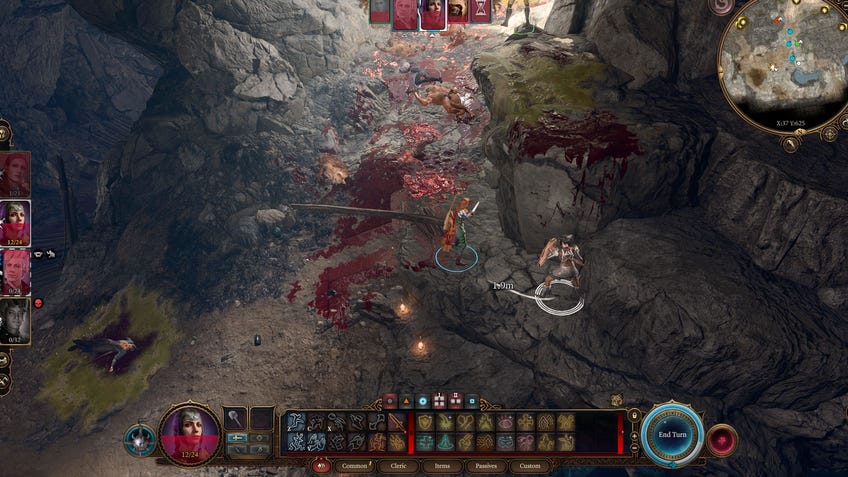
Although there are plenty of creatures in Baldur’s Gate 3 who cannot be reasoned with, there are those who might deserve a second chance. For example, there are many people and creatures capable of forcing others to fight against their will.
For these situations, you might wish there were a way of completing combat encounters without the weight of innocent lives on your hands. Especially if you’re playing a morally good character. Though BG3 doesn’t highlight it at the beginning of the game, there is a way of approaching combat encounters without having to kill the people fighting you.
By using non-lethal damage, players can perform attacks and damage-dealing actions on others without killing them. Whereas players in Dungeons & Dragons can simply announce to their DM that they want to do non-lethal damage to someone, players in Baldur’s Gate 3 must toggle a specific setting. By opening the passive section of the combat menu and selecting ‘non-lethal damage’, players can have their knock enemies unconscious if they reduce their hit points to zero.
Do make sure that you have non-lethal damage on for your other characters as well, if you want to complete the entire combat encounter without killing anyone.
3. How to better organise your inventory
Do all those water bottles spark joy?
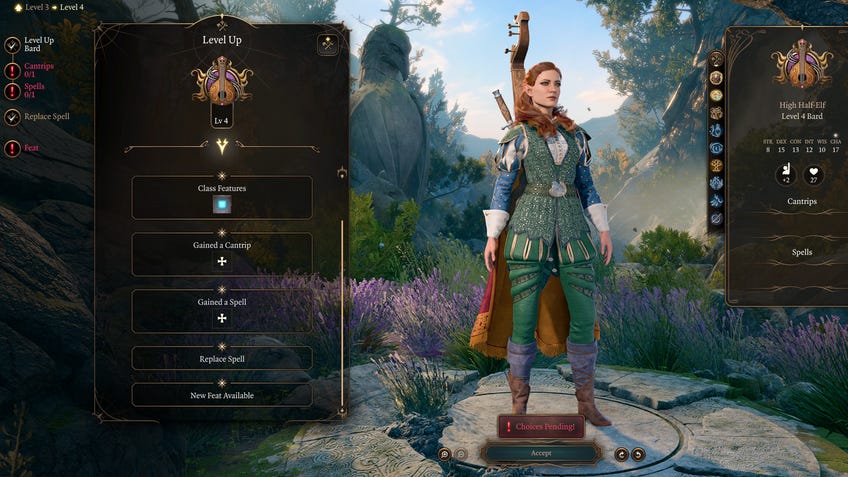
You’ll be picking up a lot of stuff throughout your playthrough of BG3, resulting in your inventory looking like Marie Kondo’s worst nightmare. The game will automatically sort your supplies and alchemical items into their respective bags – if you have them – but you might not know that you can also sort items into bags yourself.
Various different backpacks can be found throughout Faerûn. While some are designed to hold specific types of items, such as supplies and alchemical resources, others can hold literally anything. Grabbing ahold of backpacks can make your inventory a heck of a lot cleaner. A cleaner inventory means spending less time scrolling through rows and rows and stuff and more time playing the game. This is very similar to D&D players using a character sheet system to record and catalogue all of their items.
My personal system has seen me placing spells and potions into one backpack, while another contains all the documents, letters and books I want to keep, and another backpack holds all the items that I want to sell to the next person I can trade with. Doing this means that you can hand your other characters all the items they may need, while reserving the bulk of the stuff you have to yourself.
4. Use the right character for the right situation
Different strokes for different folks
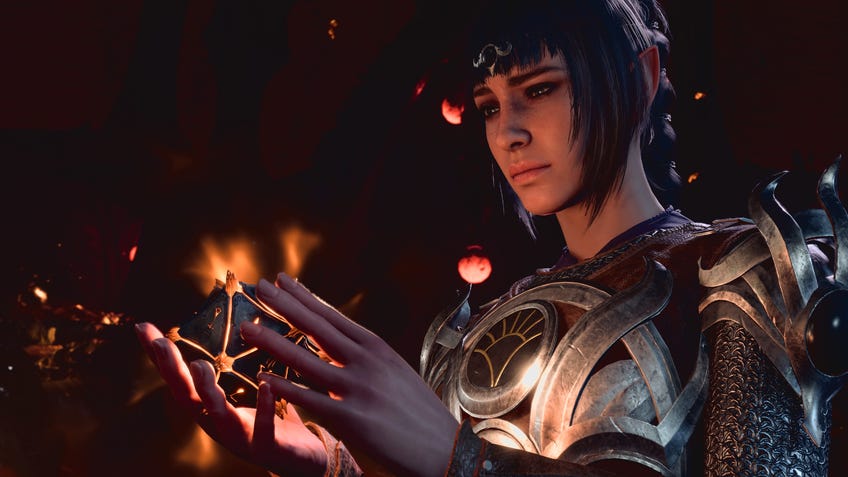
Certain characters in your Baldur’s Gate 3 party will be more accomplished in particular situations than others. Whether it’s because of their class, their ability scores or specific skills, not every character is going to be suited for every possible task. Just like a good party in D&D will have a mixture of characters with affinities for different approaches, this is why it’s important to adventure with a varied party of characters and use the right character for the right scenario.
Rogues like Astarion are accomplished at things like lockpicking and trap-disarming, which will be essential if you don’t want to miss out on some great treasure or find yourself running into locked door after locked door. However, one thing rogues like Astarion might not be so good at is perception. That’s why it’s a good idea to send ahead a character like Shadowheart to avoid setting off every trap in the surrounding area.
Alternatively, when chatting with folks, especially those who you could come into a disagreement with, it might not always be best to use your custom character. If you’re more interested in committing to full roleplay, then use whoever you wish to converse with people. Nevertheless, using a character with high charisma when talking with others may be the best option, especially if a particularly tricky persuasion, intimidation or deception check pops up.
One important thing to note is that BG3 has a habit of sometimes forcing certain characters into conversation. This happens when a character performs an action that triggers surprise dialogue - so it might be a good idea to position things so that the character you want to have the conversation is the one to perform the trigger action.
5. Utilise unconventional exploration
All the light touches is open to your party
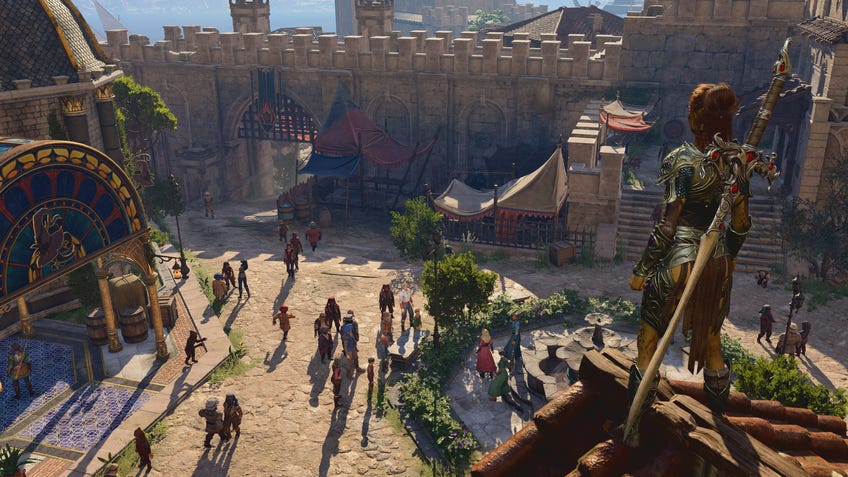
Though Baldur’s Gate 3 features limitations that the original fantasy RPG doesn’t due to being a video game, it still offers a surprising amount of freedom. Players can attempt to travel anywhere they can see around them, with no invisible walls stopping them from going to certain places.
BG3 players would do well approaching exploration in the video game as if they were playing Dungeons & Dragons, rather than any standard roleplaying video game. This means experimenting with actions like jumping and throwing to overcome walls or heights, as well as using weapons and damage spells to break through doors that can’t be lockpicked or walls that can be destroyed.
Consider experimenting with various spells and potions that can increase jumping heights and distances – such as enhance leap – while ensuring that your characters don’t die from fall damage by using a Feather Fall spell or potion. Players are even able to jump on top of or over certain walls indoors, with Larian allowing those who are curious and determined enough to seemingly defy the laws of physics.
6. Make sure to swap out spells if you can
Magical mix and match
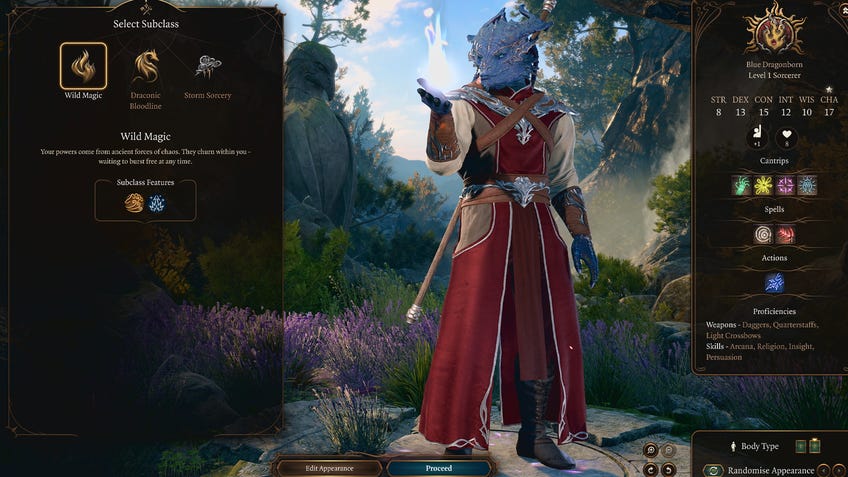
Some spellcasting classes in Baldur’s Gate 3 are only able to swap out spells whenever they level up, such as bards and sorcerers. However, just like in Dungeons & Dragons, other classes - like clerics, druids, wizards and paladins – are able to change their spellbook repertoire whenever they’re outside of combat.
This is extremely useful considering that you will likely find yourself in many situations where a certain spell would be helpful against a particular enemy or enable you to overcome an obstacle. Whenever you find yourself in a quandary, wondering how you might deal with a section of the game you’re struggling with, be sure to check through the available prepared spells of your character or a character in your party.
It’s a good idea to always have a character who can use prepared spells in your party, as it could just be the key to unlocking a strategy or options you haven't tried yet.
